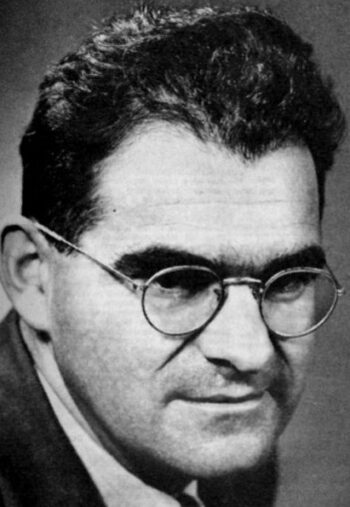Weisskopf Frederik Victor

- September 19, 1908, Vienna, Austria
- April 22, 2002, Newton, Massachusetts
Weisskopf Frederik Victor
Institutions:
- physicist – Massachusetts Institute of Technology
Membership in Academy:
- corresponding member – Department of Natural Sciences (03/11/1986 – 04/21/2002)
Victor Frederik Weisskopf, American physicist of Austrian origin, was born on September 19, 1908 in Vienna. He received his doctorate in 1931 in Göttingen, which was then one of the first centers for mathematics and physics, especially the works of David Hilbert and Max Born. After his doctorate, he worked for a while at the Niels Bohr Institute in Copenhagen, and after that he went to Zurich, then as a Jewish emigrant to the USA, where he eventually obtained American citizenship. He worked for several years at American universities: until 1943 at the University of Rochester, then at Los Alamos, where he worked on the development of the atomic bomb as part of the Manhattan Project, and from 1946 he was professor of physics at the Massachusetts Institute of Technology (MIT) in Cambridge. After that he returned to Europe. He is one of the founders of CERN, of which he was also the director general (1961–65). After that, he returns to the USA to the Massachusetts Institute of Technology.
He is the winner of numerous high awards for his scientific work. He was a corresponding member of the French, Austrian, Danish, Scottish, and Bavarian Academies of Sciences, and was the president of the American Academy of Sciences and Arts in Boston.
Victor F. Weisskopf stands out in theoretical physics, especially in works on the theory of atomic nuclei. His contribution to the understanding of nuclear reactions and radiation is significant, and his contributions are often cited in world literature. Together with Pauli in 1934, he set up a relativistic quantum field theory for bosons, in 1947 he explained the so-called Lamb’s displacement by the interaction of electrons and its radiation field, around 1950 he participated in setting up the optical model of the atomic nucleus, and in the 1970s he participated in formulating the so-called of the bag model for hadrons, within the framework of quantum chromodynamics. His main works are Theoretical Nuclear Physics (1952, with J. Blatt), Knowledge and Wonder, 1962, Physics in the Twentieth Century, 1972.